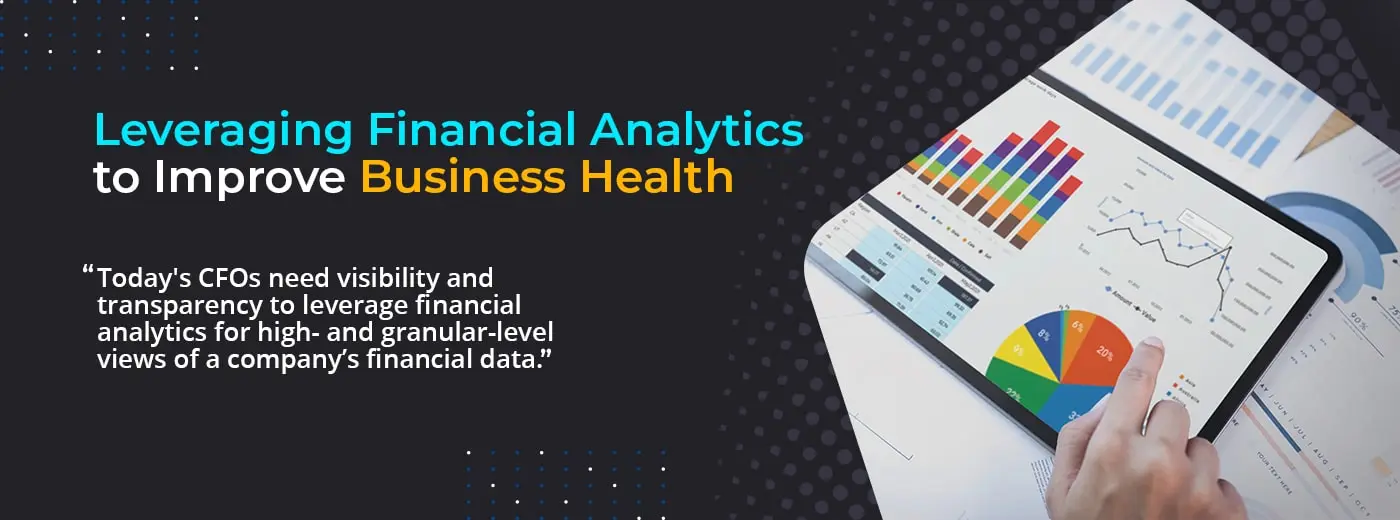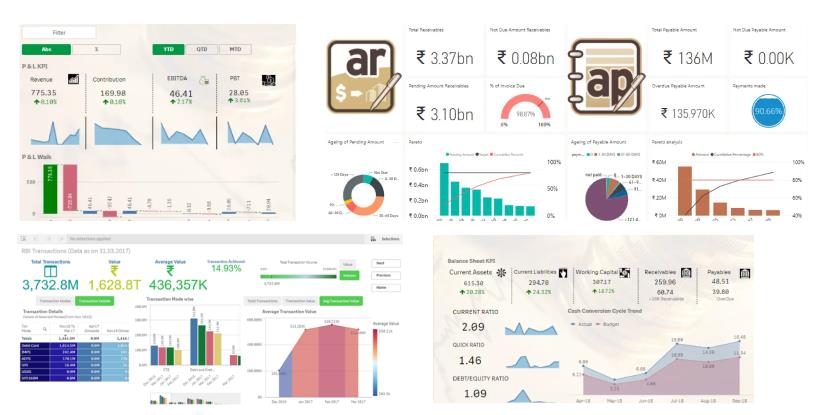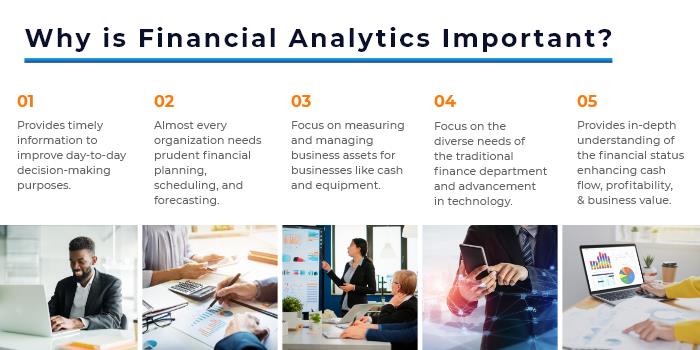
Sign up to receive latest insights & updates in technology, AI & data analytics, data science, & innovations from Polestar Analytics.
Editor's Note: Explore the crucial role of financial analytics in evaluating and improving the overall health of businesses. The article dives deep into the significance of leveraging data-driven insights to drive informed decision-making and maximize financial performance.
Imagine having the capability to see everything, everywhere. All the time. Every interaction with customers. Every moving part in your business enterprise value chain. Every financial transaction, anywhere in the world.
Imagine processing all that information instantly and using the insight to improve customer creditworthiness, purchase history, and liquidity requirements - leading to better business health, optimized operations, and cost savings.
Now imagine if that data can help you see the future, allowing you to react to events before they happen. To stop customer churn, prevent accidents, and predict and control financial failures.
And imagine if analytics could open up new revenue streams for your business. Taking the data in your business and discovering numerous ways to monetize it. Or creating completely new offers and products to give you additional avenues of revenue generation and open up to new customer segments.
Doesn’t it feel like you have a superpower?
Accepted, it’s a superpower we can all experience. Data flows through your business every day. It’s an asset you already own. All you need to do is to capture it, analyze it, and use it to transform the way you work. And that’s where financial data analytics comes into the picture, where data-driven insights help finance teams from beginning to end by understanding and analyzing past performances, predicting strategies for successful future performances, and steps to make smarter and more confident business decisions.

Source: Polestar Analytics
Today’s challenges
In the current scenario, Chief Financial Officers (CFOs) or finance executives often find themselves center-stage on a myriad of issues in the wake of economic and business uncertainty. The work of finance departments within companies is evolving at a spiraling speed.
The days had gone when finance departments were primarily responsible for bookkeeping and transaction processing only. Along with the ever-increasing pressure to sustain the financial strength of a company, CFOs are relied upon to enable the growth strategy. In a nutshell, the CFO faces the critical challenges of:
In this new era, where finance is a significant collaborator to the business, CFOs need visibility and transparency to leverage financial data analytics for high- and granular-level views of a company’s financial data, helping to improve its business performance. And for that, they need to take a new kind of approach.

Too often, data is siloed in different operating systems and can’t be automatically accessed in real time for analysis. But through a modern approach, data from various sources can be amalgamated and made available via analytics, where the data is up to mark, and the analytics create actions and meaningful insights.
So, when you can get to that level of analytics and react in real-time to insights activated within a single system that unifies core financial data analytics processes and that makes you achieve Active Intelligence for your finance team.
With the potential of analytics, we help you reduce costs, increase revenue, improve compliance, and release cash.
As the finance field is so data-heavy, financial analytics can aggregate and parse data into usable information for business leaders to identify trends in transactions or other business activities that allow them to develop more robust and relevant strategies.
The practice of financial analytics allows organizations to manage risk more effectively. It does this by providing a continual information stream based on real-time data on how the business is performing. This performance information can assist leaders with identifying trends that expose the firm to adverse risks. For instance, HR leaders use financial analytics to identify employee turnover trends, allowing them to make adjustments and retain key individuals. Situations like this have the added benefit of reducing turnover costs and reducing turnover risks.
The day-to-day running of a business requires a certain amount of cash to keep the lights on; wages paid, etc. Knowing how money is moving in and out of your business is essential for gauging the health of your business. Cash flow analytics involves using retrospective or real-time indicators such as the Cash Conversion Cycle and Working Capital Ratio.
You can also use tools like CFO Cockpit in such scenarios. Alongside managing cash flow and making sure you have enough cash to keep the cogs turning, financial analytics can also support a variety of corporate functions. For example, it can help accounts receivable personnel increase cash flow by prioritizing which customers are contacted by collection staff and when.
Financial analytics provides critical insights into sales channels and market segments. This type of data helps identify ways to increase margins or develop strategies to expand in markets where margins are best. This type of data is often used in predictive analytics in finance as well, helping to create forecasts that leaders can use to identify the impact of allocating resources to specific products and sales channels.
Finally, Financial analytics provide critical insight into supply chains, helping to better manage inventory or raw materials. The access to a more robust data pipeline allows businesses to control costs, reduce shortages, minimize overages, and identify vendor partnerships that are the most accretive.
The use of financial analytics has changed how businesses operate. The capability to leverage data from different sources, create easy-to-use dashboards and visualization tools, and predict future returns means that financial planning and analysis give your business a competitive edge.
Speak with Polestar Analytics advanced financial analytics consultant to know how it can assist your company stay on par with the competition and substantially improve its profitability and efficiency.
About Author

Content Architect
The goal is to turn data into information, and information into insights.